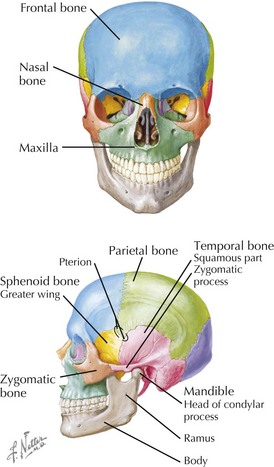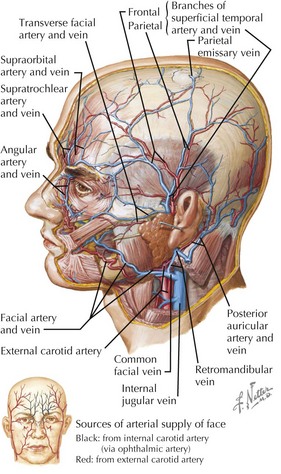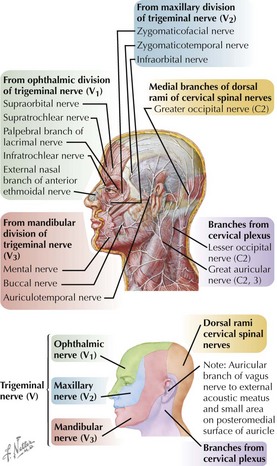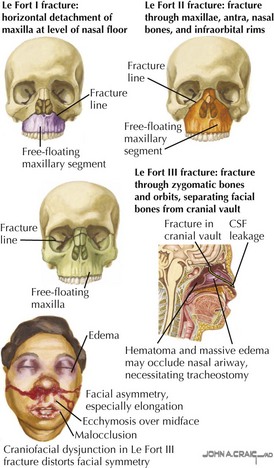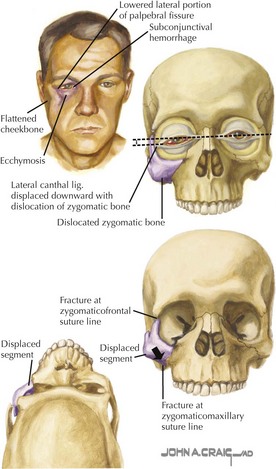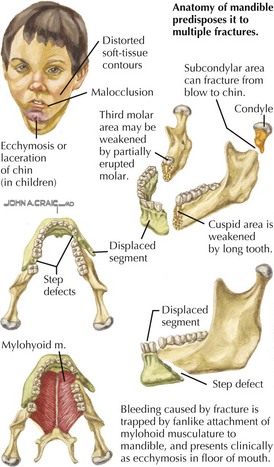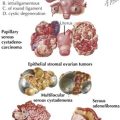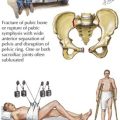1 Skull and Face Fractures
Anatomy of the Skull and Facial Skeleton
Skull and Facial Bones
• Viscerocranium (facial skeleton): maxilla, nasal, lacrimal, zygomatic, vomer, palatine, mandible bones
• Most of the bones of the skull are flat (type), with inner and outer “tables” (layers) of compact (cortical) bone surrounding trabecular bone and marrow space (diploë).
• Emissary veins connect diploic spaces with cerebral veins/sinuses (intracranial) and scalp and superficial veins: potential route for intracranial spread of infection.
Scalp Layers
• Aponeurosis of occipitofrontalis muscle, with lateral attachments of temporoparietalis and posterior auricular muscles (collectively the epicranius)
Neurovascular Supply
Arteries of Face and Cranium
External Carotid (Proximal to Distal)
Venous Drainage
Internal Jugular Vein
Common Facial Vein
• Tributaries
• Pterygoid venous plexus of deep face connects with deep facial and maxillary veins and with cavernous sinus via connections through foramen ovale.
Innervation of the Head and Neck
• Olfactory (I): special somatic sensory to superior nasal cavity; foramina: cribriform plate of ethmoid; intranasal CSF leakage, anosmia with ethmoid fracture
• Oculomotor (III), trochlear (IV): motor to extraocular muscles, travel through cavernous sinus, superior orbital fissure (sphenoid bone), and orbit
• Trigeminal nerve (V): sensory to most of face and head, superficial and deep, including sinuses and supratentorial dura; motor to muscles of mastication, tensor palati, and tensor tympani
• Abducens (VI): runs along clivus and through cavernous sinus and superior orbital fissure to lateral rectus; clival fracture can cause lateral gaze paralysis
• Acousticovestibular (vestibuloacoustic, auditory) (VIII): from cochlea and vestibular apparatus (labyrinth) in temporal bone; nerve enters internal acoustic meatus (temporal bone)
• Glossopharyngeal (IX): taste and common sensation from posterior third of tongue and tonsillar fossa; exits jugular foramen (between temporal and occipital bones)
• Vagus (X): motor to palate, pharynx and larynx, thoracoabdominal viscera; exits jugular foramen (between temporal and occipital bones)
• (Spinal) accessory (XI): motor to sternomastoid and trapezius muscles; exits jugular foramen (between temporal and occipital bones)
Clinical Correlates
Mid-face Fractures
Zygomatic Fractures
• Trauma to cheek can disrupt zygomatic articulations with frontal, maxilla, sphenoid, and temporal bones.
• Frontal and maxillary suture line fractures are common, with displacement inferiorly, medially, or posteriorly.

